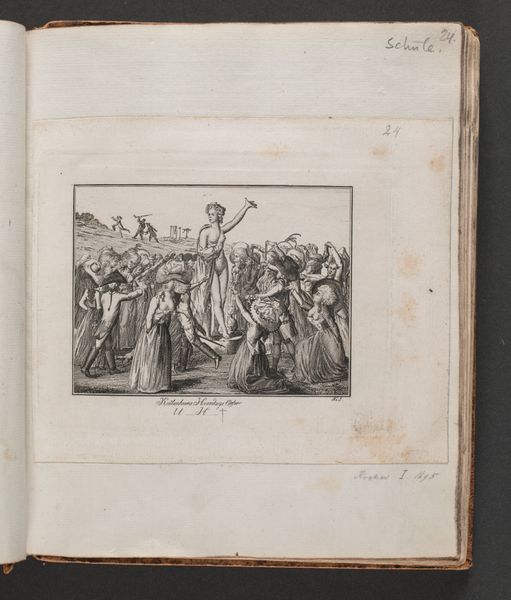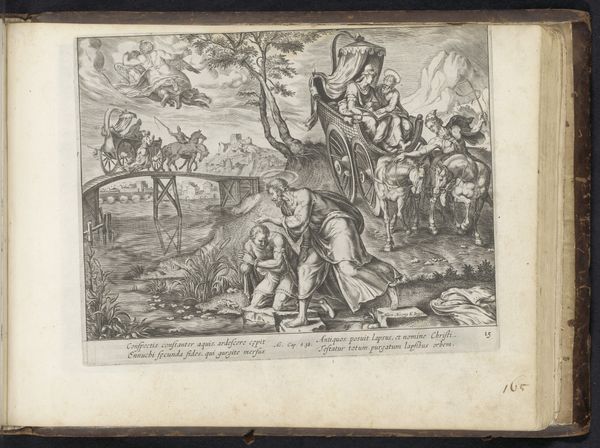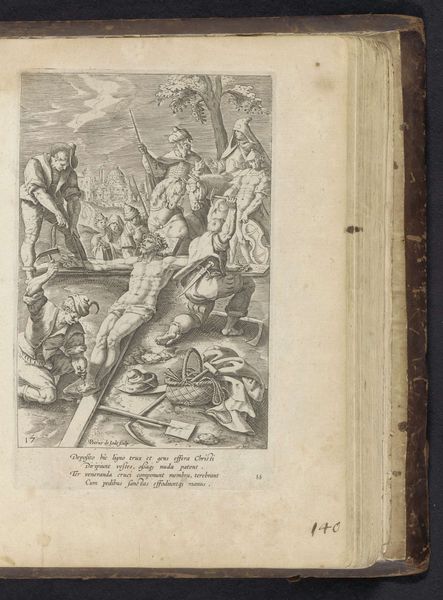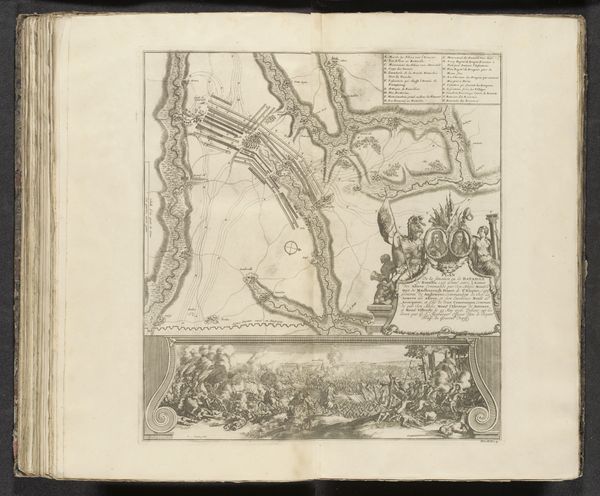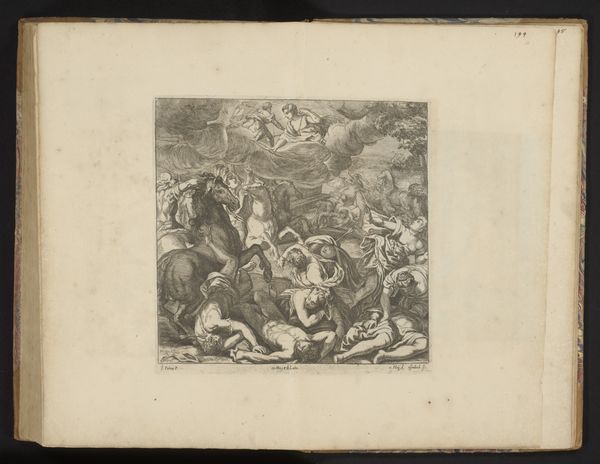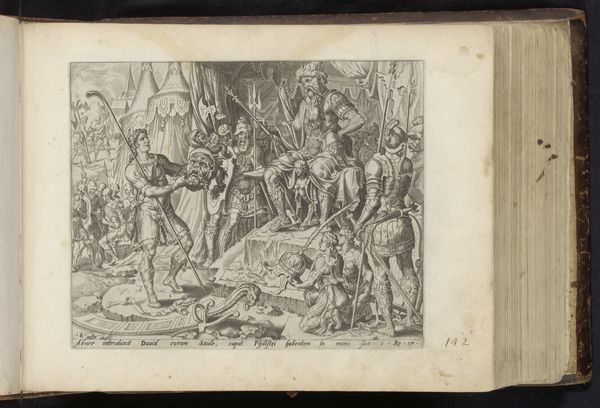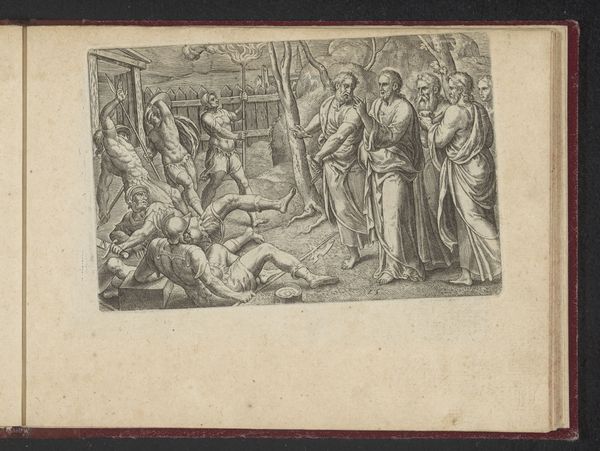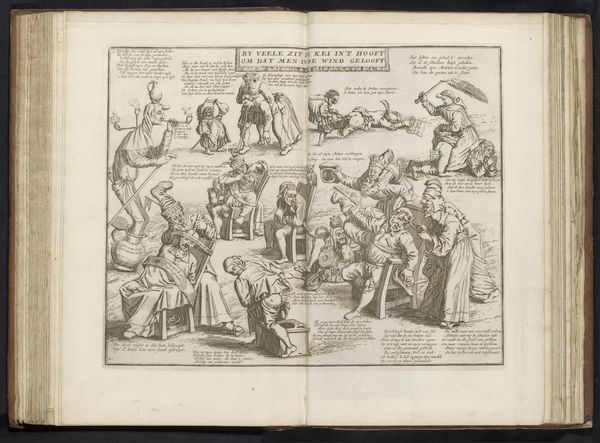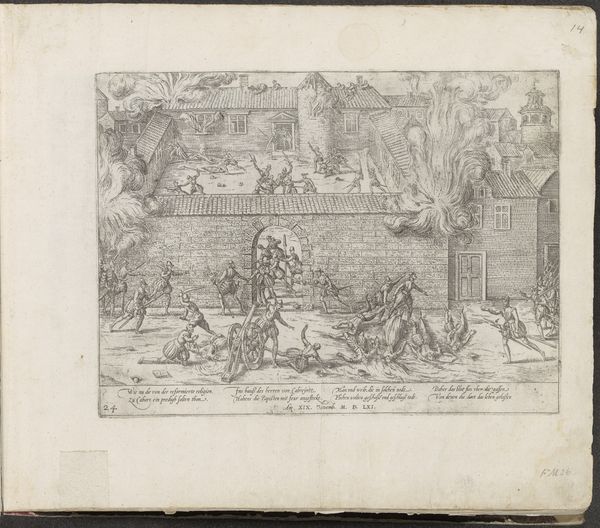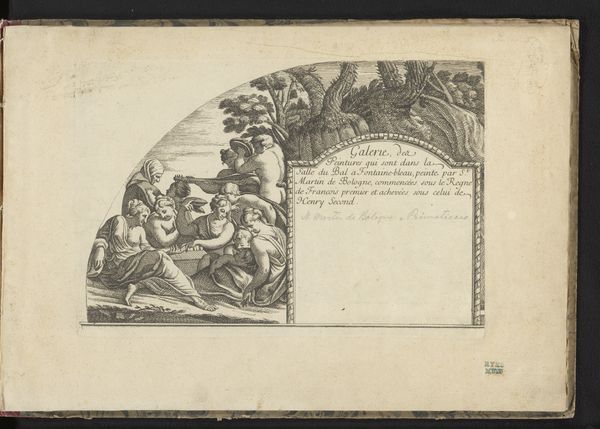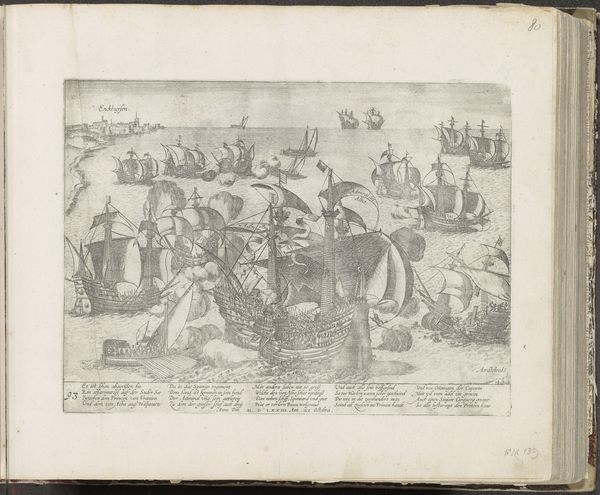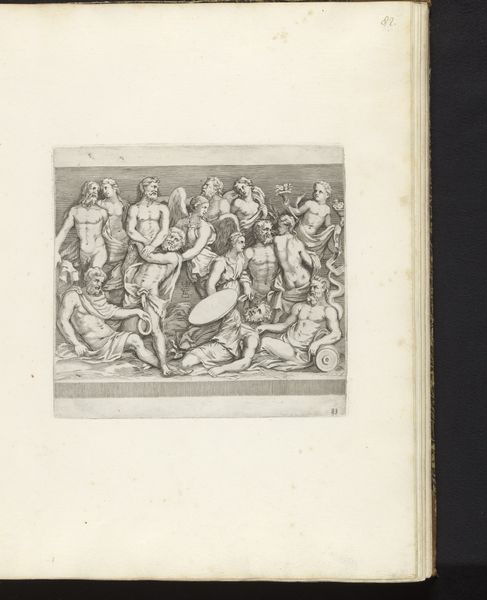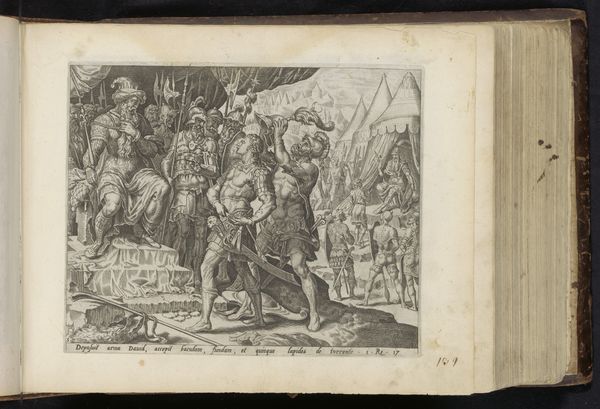
drawing, print, paper, ink, engraving
drawing
narrative-art
baroque
pen sketch
paper
ink
cityscape
genre-painting
engraving
Dimensions: height 233 mm, width 174 mm
Copyright: Rijks Museum: Open Domain
Editor: Here we have "Rampzalige gevolgen van de actiehandel, 1720," or "Disastrous consequences of trading in shares, 1720," by Jan de Ridder. It looks to be an ink drawing or engraving, filled with chaotic scenes of suffering. What strikes me most is the palpable sense of societal collapse. What are your thoughts on the historical implications of this work? Curator: It's a powerful depiction of economic crisis, isn't it? De Ridder isn’t just showing us individual misfortune, but critiquing the very system that enables such disparities. Think about the term "actionhandel"—trading in shares. In the context of 1720, this likely references speculative bubbles like the Mississippi Company scheme or the South Sea Bubble. This work speaks to the devastating consequences of unchecked capitalism and the vulnerability of ordinary people. Can you identify visual elements that highlight this social critique? Editor: Well, there are people collapsed on the ground, looking destitute, juxtaposed with figures who seem to be gambling or celebrating. The contrast between those groups is pretty stark. Also, the chaotic composition seems to reflect the overall societal upheaval. Curator: Precisely. De Ridder uses his art to draw attention to those power imbalances, to indict the social and political systems. The print medium itself is significant here. By creating an easily reproducible image, De Ridder disseminated his critique widely, attempting to engage the public in a conversation about economic justice. In what ways do you think similar themes are being addressed by artists today? Editor: That's fascinating! I guess this connects to current concerns about economic inequality and the instability of global markets. The artist is not simply portraying the terrible consequences but dissecting its historical causes and power imbalances that create societal suffering. Curator: Exactly. De Ridder’s work remains relevant because it compels us to confront the social consequences of unchecked financial power and question whose interests are truly being served. Editor: Thank you; thinking about this artwork through a contemporary lens really opens up a new perspective. I see how art from the past resonates and has many voices speaking about current and ongoing events and experiences.
Comments
No comments
Be the first to comment and join the conversation on the ultimate creative platform.
